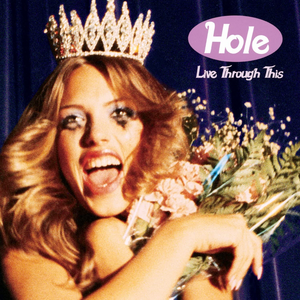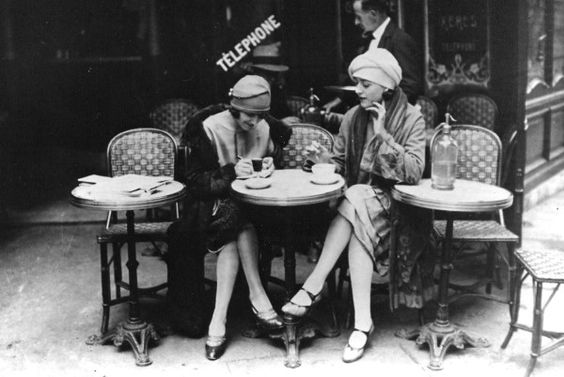Gurlesque: Poetics of the Bizarre, Ugly, and Feminine

It’s exaggeration and mockery that goes beyond sarcasm, specifically posed on the feminine. It tells the story of the ugly and morbid sometimes with a hint of wit. It may sound fictitious but at the same time exposes what has shaped reality. It expresses what the “truth” could not capture. It is poetry, parody, tragedy, agony, anguish, and irony; all combined to shock conventions and empower the marginalized. It is called Gurlesque.
Mocking and Celebrating the Female
She looks like the Sunday comics She thinks she's Brenda Starr Her nose job is real atomic All she needs is an old knife scar
Who remembers this punkish pop late 70’s song from Blondie? It tells a girl vs. girl tongue-in-cheek story, you know, like when the popular girls in school compete against each other. The ref goes like this:
Yeah, she's so dull, come on rip her to shreds She's so dull, come on rip her to shreds
And that is the title of the song, “Rip Her to Shreds”. It’s a comical take on how women mock each other in rivalry. The next verse goes on to describe this reality in a parody fashion:
Oh, you know her, “Miss Groupie Supreme” Yeah, you know her, “Vera Vogue” on parade Red eye shadow! Green mascara! Yuck! She's too much
In a BBC interview, Deborah Harry, the lead singer of Blondie and who also co-wrote this song with band member, Chris Stein, said that the song was actually about what gossip columns do to people’s lives.
This suggests that the song is a reflection of how the media portray women and influence the readers’ perception about women. The song reflects this reality through exaggeration of the female experience and by depicting it in its extreme. What you get is a tune that is tastefully sarcastic, funny and fun at the same time. Even more fun as Debbie sang it with an in-your-face feminine tone, and when performed live, with a badass grrrl attitude that was not yet popular in the 1970s. Thus, ironically, this narrative of female stereotyping which demeans women has brought the female experience from the margins to the center.
Now fast forward to the 80’s, an era where female solo artists, bands, and band leaders were slowly emerging. An anthem of female celebration had hit the charts in 1984—a cover song, “Girls Just Want To Have Fun”, sung by a quirky red Mohawk female vocalist, Cyndi Lauper, which was released a year earlier. This was timely as this was when pop videos were the music industry’s new trend and youths were glued to MTV, thus amplifying the song’s message to youngsters through visualization. The storyline of the song’s video centers around Cyndi walking home under the morning light in last night’s gown and telling her parents that “girls just wanna have fun”.
I come home in the morning light my mother says when you gonna live your life right Oh mother dear we're not the fortunate ones And girls they want to have fun Oh girls just want to have fun
And in another verse of the song:
Some boys take a beautiful girl and hide her away from the rest of the world I want to be the one to walk in the sun....
Afterwards in the video, Cyndi and her female friends come together in one frame, singing “girls just wanna have fun” and later they are marching and dancing in the streets with male onlookers, some even joining them, creating the narrative that women as a collective are changing values.
The song does not explicitly talk about discrimination or equal rights or anything else as such, but just the simple message that women, like men, are entitled to enjoy their lives (have fun). The video illustrates this in a comical and parody manner just as the way the singer presents herself in a comical, playful female—sometimes self-mockery—image, quite different to the typical sexualized female representation promoted by the music industry.
Interestingly, the song was originally penned by male songwriters Robert Hazard and Lolly Vegas and was intentionally written from a male perspective. Cyndi changed parts of the lyrics and the sound, shifting the narrative and turning it into a female empowerment anthem.
The 90s: Gurelsque and Grunge
Fast forward again, now to the 90s. This era not only saw the emergence of more female musicians, but also a different way of representing women through music and fashion. In pop culture, women wearing leather and jeans or unisex attire had been typically associated with female autonomy and independence. In contrast, the 90s popularized babydoll-like dresses that had begun resurfacing in the 80s.
Babydoll dresses were typically associated with femininity, but the 90s had given them a whole new meaning in expressing female sexuality. Not only because the skimpy babydoll attire was worn with masculine boots, but because the new babydoll mixed the pure with the profane, vulnerability with empowerment, and the virgin with the whore. Not surprisingly this babydoll version of the 90s was subsequently known as the “kinderwhore dress”, which was made fashionable by female rock musicians, particularly in the grunge scene.
... the new babydoll mixed the pure with the profane, vulnerability with empowerment, and the virgin with the whore.
During the same time, a new poetics had emerged—the Gurelsque—which was employed by majorly female writers and poets who used parody and mockery to describe the female experience. This form of poetry and writing disrupts traditional values about the feminine by transforming femininity in its extreme into subversiveness that challenges the power structures. This decade also saw the birth of Third Wave Feminism which principles (such as diversity, inclusiveness, and intersectionality), resonate with Gurlesque aesthetics. Gurlesque was initially used to describe a form of poetics, but it has then been expanded to other forms of arts such as music, although probably unintentionally by the songwriters as Gurlesque was a term initially created by scholars.
Gurlesque (later also known as New Grrly Poetics) was first coined by American feminist poets and scholars Arielle Greenberg and Lara Glenum to describe a new female poetics that emerged in the turn of the millennium. However, there are earlier writers commonly associated with Gurlesque, such as Sylvia Path and Gertude Stein. Moreover, Gurlesque is influenced by other forms of arts which arose further back in history.
... Gurlesque ... challenges what is considered normal or natural in relation to society’s norms on gender and femininity by using mockery and ridicule ...
The word Gurlesque derives from girl culture, burlesque, and grotesque. Burlesque (Italian—burla: joke, ridicule, mockery) is a musical and theatrical parody popular in early 17th century Europe. Initially, grotesque is a term used in literature and drama to describe something strange or unusual, but generally it describes something comical, ugly, distorted, bizarre, or shockingly and disturbingly inappropriate. Combine these with girl culture, then you get Gurlesque—an artistic expression which challenges what is considered normal or natural in relation to society’s norms on gender and femininity by using mockery and ridicule, and by transforming these norms into a different feminine culture that may appear bizarre, ugly, and disturbingly unacceptable to society.
In the 90s, Gurlesque was attributed to female solo artists or bands led by female musicians, particularly in grunge, a genre which emerged on the onset of the 90s. Hole, the grunge band led by main songwriter Courtney Love, and particularly their album “Live Through This” (1994), is regarded as displaying Gurlesque features in its compositions, such as lyrical expressions of morbidness. The songs in this album, which almost all were co-written with lead guitarist and band co-founder, Eric Erlandson, are generally considered to represent feminist themes—the experiences of unjust women endure in society through female objectification, sexual violence, motherhood, and personal relationships. These themes are in line with Third Wave Feminism that rose in the same decade.

Live Through This album cover (Wikipedia)
The cover of the “Live Through This” album is a good example of what would be called Gurlesque art by those who use the term. The cover shows a woman with a blondish feathered haircut wearing a beauty queen crown. Her smudged eye make-up almost running down her cheeks due to tears of joy, her wide gaping smile and her arms tightly embracing a bouquet all display a sense of eerie exaggeration, mockery, and ugliness. It’s a parody of what it means to be beautiful in a male-dominated society—the tragedy of being female. The album cover is now an icon of the grunge decade and of Hole as one of the best grunge bands. The iconic cover and the album’s songs are also celebrated for their feminist symbolism and as the legacy of an era.
Gurlesque: Challenging Power through Subversiveness
Gurlesque was a term used in the 90s by feminist scholars, arising from their observation of the arts and literature during this decade that employed the use of girl culture, burlesque, and grotesque to describe the female experience. Nonetheless, the essence of Gurlesque can be found earlier in the works of a few (song)writers, poets, and artists. Gurlesque serves as an awakening and resistance as it transforms femininity into a form of subversiveness that challenges the power structures which oppress women as a social class.
Gurlesque continues to find its relevance in the 2000s, where a number of poets are associated with this form of poetry. You can check out some of their works published in the book, Gurlesque: the new grrly, grotesque, burlesque poetics (Lara Glenum and Arielle Greenberg, eds.).
-Some Thoughts from the Cappuccino Girl- (2024)
#music #subculture #gender #women #counterculture
Top image: Courtney Love in a babydoll dress performing with her band, Hole (Pinterest)
Sources
Cooper, Sabrina (2019) 'The Story Behind Hole’s Iconic Live Through This Album Cover.' AnOthermag.com. https://www.anothermag.com/art-photography/11646/the-story-behind-hole-s-iconic-live-through-this-album-cover-ellen-von-unwerth. Accessed June 15 2024.
Oliva, Melanie (2016) 'What Is Gurlesque Poetry? A third wave of feminism, sexuality, and femininity revisited.' The Odyssey Online. https://www.theodysseyonline.com/gurlesque-poetry. Accessed 1 May 2024.
Volpert, Megan (2024) 'The enduring feminist legacy of Hole: 30 years later, must we still “Live Through This”?' Salon.com. https://www.salon.com/2024/04/11/hole-live-through-this-courtney-love/. Accessed 23 April 2024.
Videos
Cyndi Lauper YouTube Channel (2009) Girls Just Want To Have Fun (Official Video). https://youtu.be/PIb6AZdTr-A?si=KQIzN6OcWs4FwpXT. Accessed 17 June 2024.
Warmer Music Videos YouTube Channel (2016) Blondie – Rip Her To Shreds (Live). https://youtu.be/b18RIMN5NBg?si=eJpk4FsZ-wlBk7KM. Accessed 17 June 2024.
POPULAR TOPICS
#subculture
Gurlesque: Poetics of the Bizarre, Ugly, and Feminine
#films
Mrs. Robinson, Countercultures, and Politics
#history
The Dutch Golden Age, Golden for Whom?
I also write articles here: https://feministpassion.blogspot.com/





